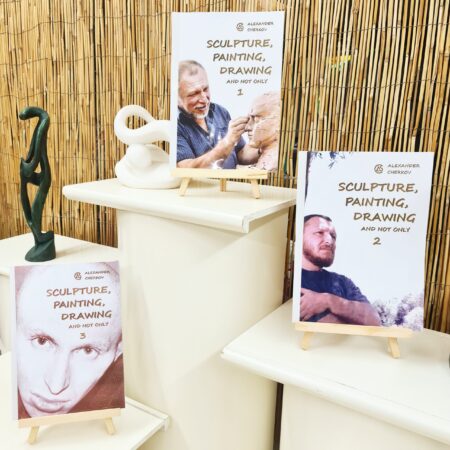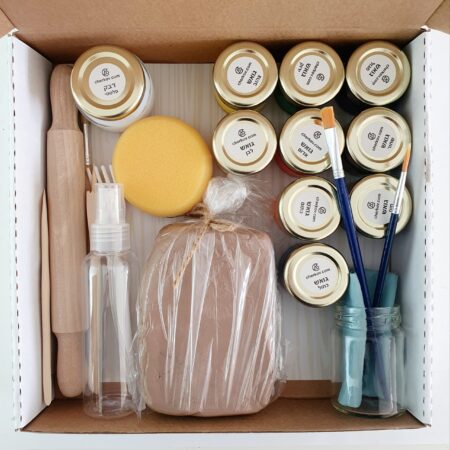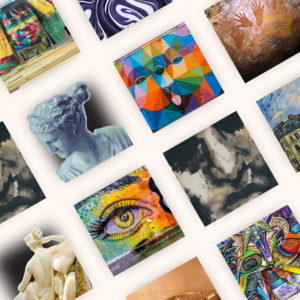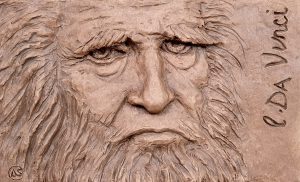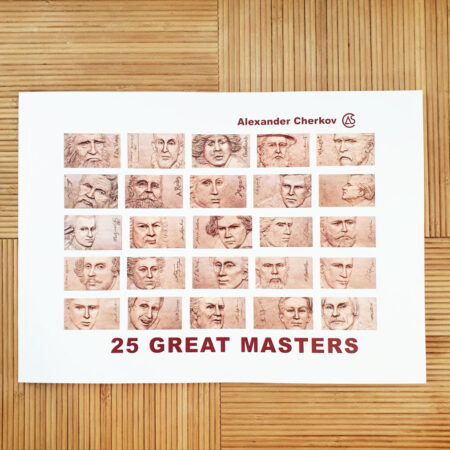A method of sculpting in ceramic clay by Alexander Cherkov, from the book Introduction to the World of Art "Sculpture, painting, drawing and more"
The most important of the sculptural materials is, in my opinion, the ceramic clay. There are, of course, various plastic polymer materials, different types of plasticine, but there is nothing more pleasant and convenient for sculpting than natural ceramic clay. It is important that you know the method of sculpting in ceramic clay, which includes several steps:
At the beginning of the work (At the construction stage of the composition), the degree of moisture of the clay should be sufficient to ensure that the adhesion (gluing) of the pieces of clay will be strong without the need for additional moisture. But at the same time, the material should not be too wet and should not stick to hands. While adding new pieces of clay, care must be taken to ensure that no air spaces are created inside the clay mass, which can cause damage later on and cause the sculpture to explode during The fire.
during workDepending on the temperature and humidity level of the air in the work environment, the sculpture should be wetted so that the clay does not lose its plasticity. That is, the statue will not crack while applying the compression or bending force.

At the end of the work On the composition and before moving on to the processing and finishing work of the sculpture, the sculpture should be left for a few days to dry, using a tight cover with a plastic bag.
If the statue is destined for fire, it must be emptied and prepared for fire. Preparation for the fire Should be done after initial sculpting of details, but before the final finishing process. Firstly because the clay is still soft and secondly because the process of preparing the sculpture for burning is very traumatic down to the smallest detail.

When the clay has dried sufficiently (this is determined by its lack of plasticity), it is possible to move toThe final finish, That is, work on the details, smooth the surface, rub or create the desired texture.

With the experience of working with clay, you will feel how obedient, sensitive and grateful the clay is in loving hands.

Watch a video demonstrating a clay sculpture method 3:41
And what's next?
When you have finished working on the sculpture it is important to preserve it, if it remains in its natural state - dry ceramic clay - it will be very fragile. If possible it is advisable to burn it in a ceramic oven, this is required Preparing the statue for burning. Another option is toPrepare a template And then do casting. If you decide to leave the sculpture as it is, it is recommended to cover with a layer plastic glue.
Male torso sculpture exercise
Sculpture products
- "Natural ceramic clay - 3 kg" is un-purchasable.
- You can not add this bundle to the cart.



